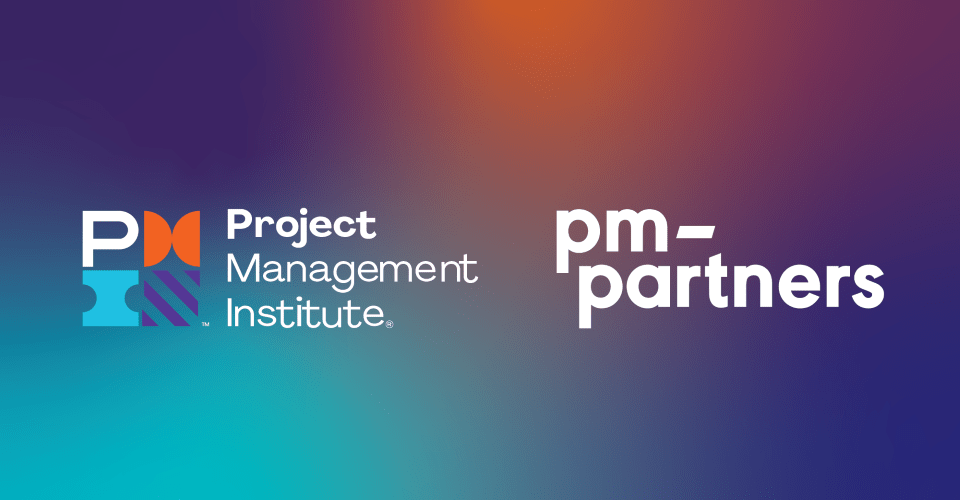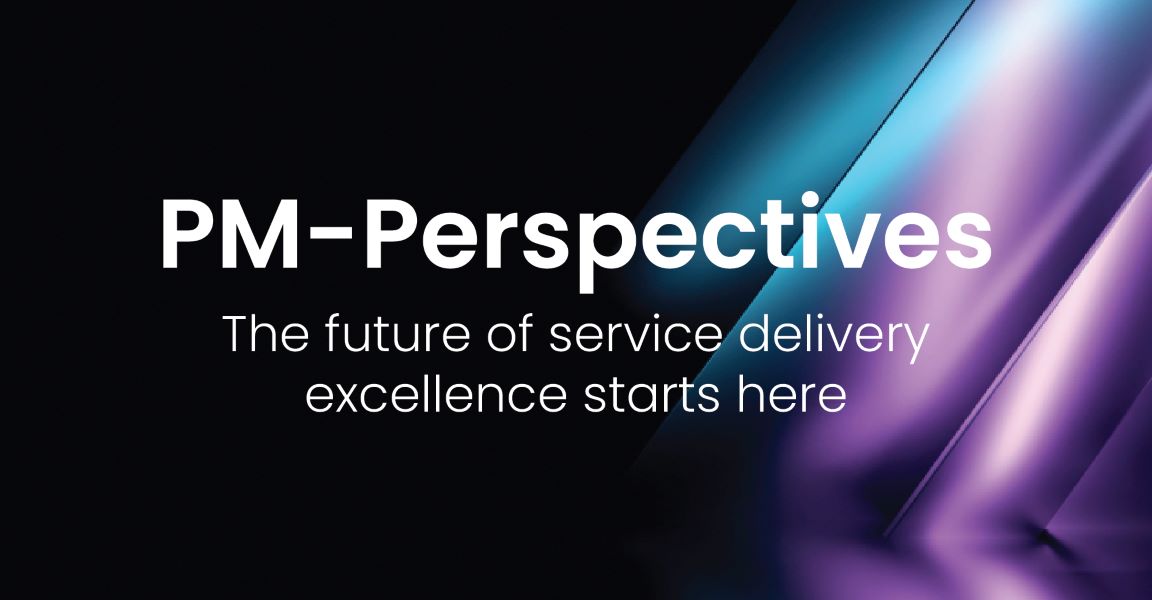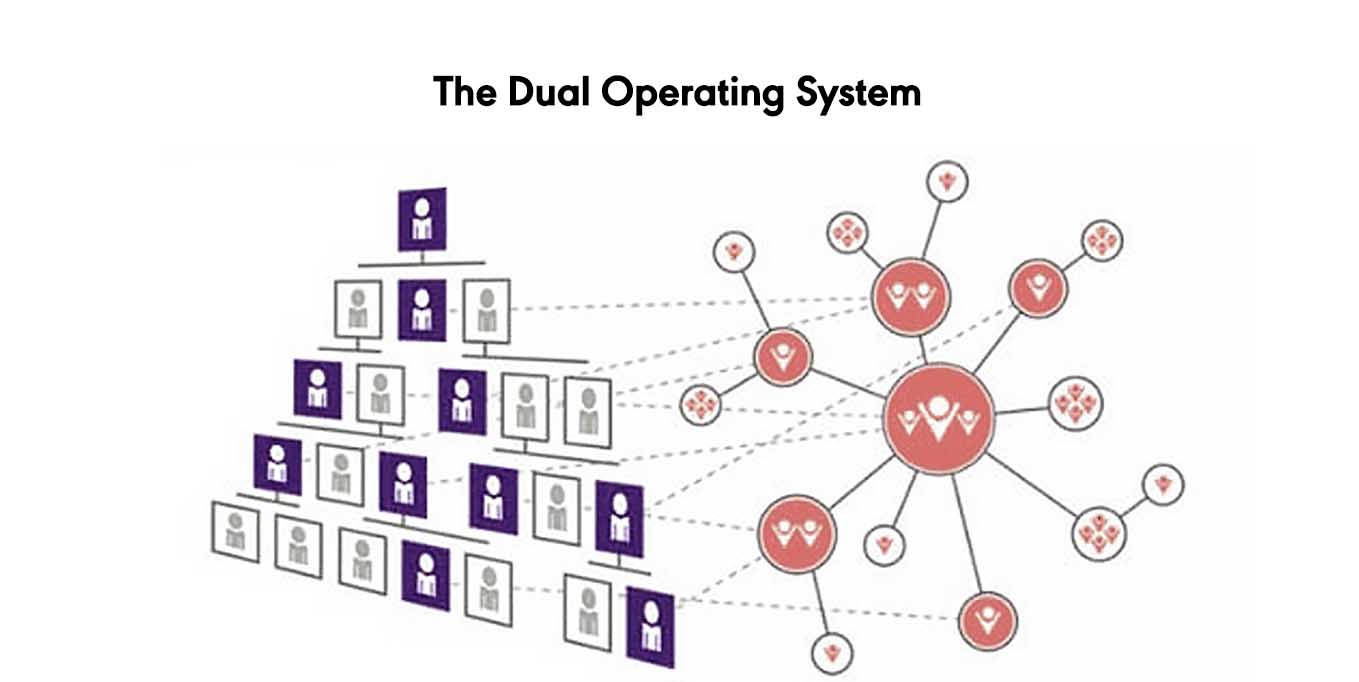Applying the Dual Operating System for greater success in a VUCA world
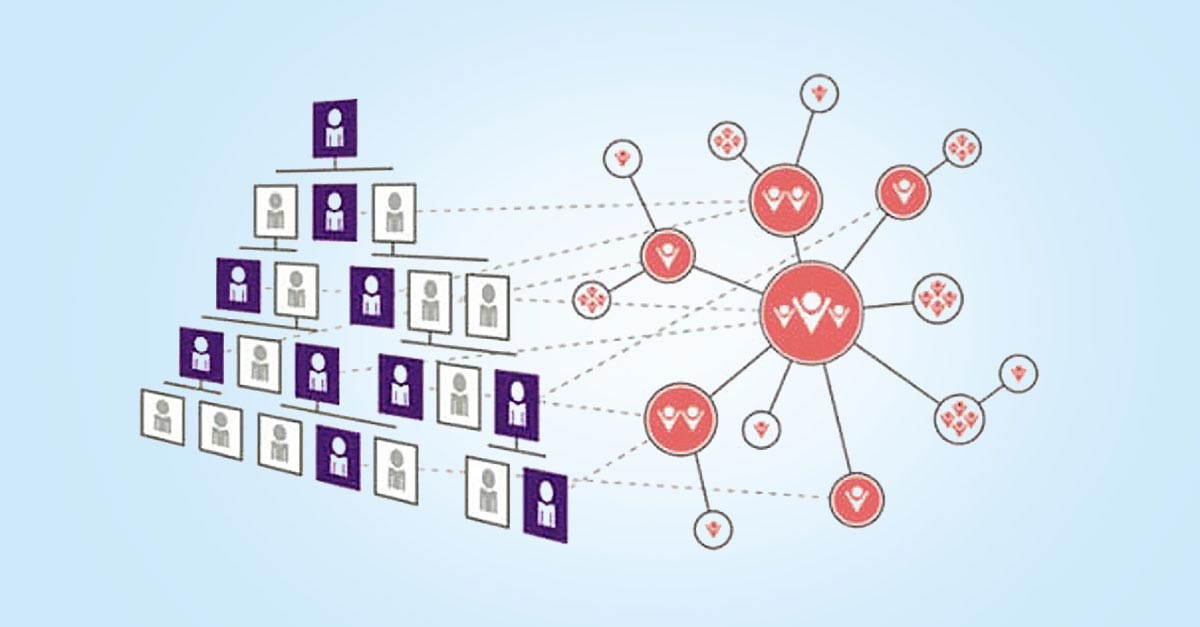
Modern organisations face challenges not only in managing their business-as-usual (BAU) activities, but in simultaneously driving transformational change. In the face of competing demands, Senior Consultant Salleh Anuar explores how the Dual Operating System can help decision-makers tackle the demands of managing their current operations while transforming for the future.
Business decision-makers are experiencing greater pressure to transform their organisations quickly. Not only is this challenging from an operational standpoint, but it’s an expensive endeavour as well – investment into digital transformation, for instance, is expected to eclipse $1.8 billion by the end of 2022, according to the latest IDC Spending Guide.
Balancing both demands is a challenge for even the most experienced leader, whether in the public or private sector. Failure to effectively deal with both challenges can result in negative knock-on effects across the entire organisation. One clear impact commonly experienced is an increase in staff attrition due to adding new initiatives to already-significant workloads.
Leaders who see an increase in workload as being inevitable – and are therefore resigned to the fact they will lose people during their organisational transformation – may accept this reality if it means achieving both outcomes. But is this really necessary? Given the current climate is truly an employee’s market, organisations that retain such antiquated beliefs run the risk of losing even more top talent – not to mention the difficulties in attracting new staff to the organisation.
How organisations are juggling BAU and transformation initiatives
This rapid uptake in transforming quickly is largely down to the volatile, uncertain, complex and ambiguous (VUCA) industries in which many organisations operate. Decision-makers are driving transformation initiatives to ensure their business can meet increasingly complex demands, and to secure their relevance in the new operating environment.
They also have to balance both transformation and BAU operations intelligently – and therein comes the real challenge. Organisations that fail to deal with these two polarities often find themselves at risk of rising attrition rates, greater disengagement and increased workloads – something managers must be aware of and put in place strategies to retain talent during a transformation. Here at PM-Partners, we have seen requests for support from organisations that are encountering these challenges with increasing frequency.
So what is causing these risks? Essentially, leaders are driving transformation initiatives through their current operating model, which is largely hierarchical in nature. This creates additional headaches for staff at various levels – particularly in terms of requiring multiple rounds of approval – and often leads to an uncontrolled increase in workloads, plus various industry-specific issues.
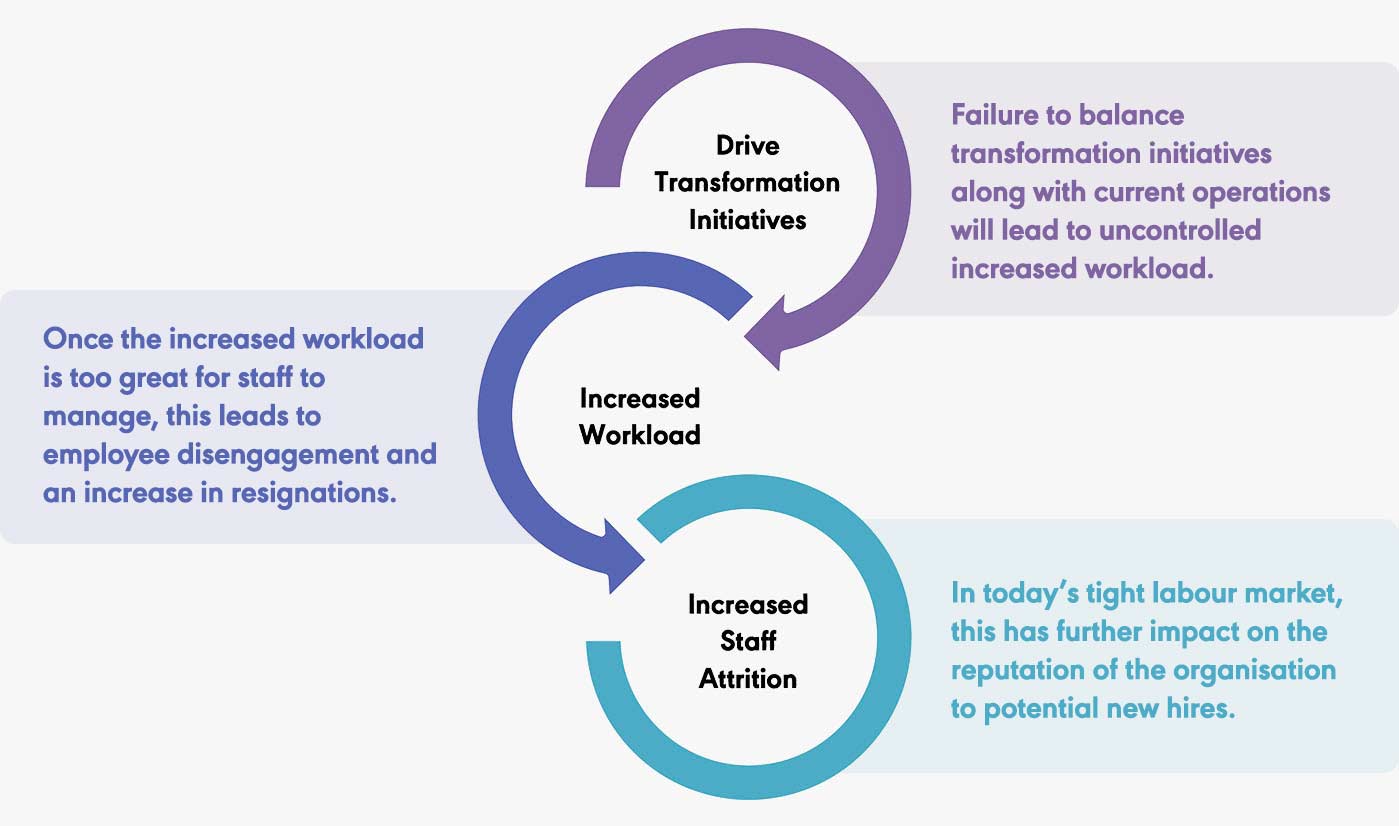
The value of a Dual Operating System
The current hierarchical structure that most organisations have adopted – invented during the Industrial Revolution – is no longer fit for purpose in the digital age. As John P. Kotter puts it when he introduced the concept of the Dual Operating System in 2014: “The solution is not to trash what we know and start over again but instead to reintroduce a second system – one which would be familiar to most successful entrepreneurs. You need a Dual Operating System.”
Scaled Agile further built on Kotter’s concept as an operating model to help organisations compete and thrive in the digital age. This model has been tested over the years and is now a meaningful way to separate the concerns of new transformation initiatives (driven through the network) and efficiently running the BAU operations that leverage those solutions (the responsibility of the hierarchy).
The Dual Operating System balances two needs: a stable, functional hierarchy that focuses on operating a sustainable business and ensuring the smooth running of day-to-day operations; and a dynamic network of people focused on changing the business by developing new innovative solutions and ensuring a faster time-to-market.
Both hierarchical and network structures bring their own benefits, whereas on their own they fall short of supporting successful outcomes for the organisations operating within a complex adaptive environment.
Implementing the Dual Operating System
PM-Partners’ extensive advisory experience has helped us identify three broad steps that ensure a high probability of success. We advocate following these steps as part of implementing a Dual Operating System:
- Identify and train change agents: Step one involves training up key personnel in the Dual Operating System. Our Leading SAFe 5.1 Certification Course is the ideal way to equip those tasked with setting up the Dual Operating System with the necessary knowledge and skills.
- Develop a roadmap for implementing the Dual Operating System: Change agents, along with key decision-makers, develop an implementation roadmap. This requires the identification of areas where you can work with or around the current hierarchical structure, including which transformation initiatives will be used as part of the ‘network’ approach.
- Ensure change sustainability: Identify change management efforts to ensure there is sufficient awareness of the change that the Dual Operating System is advocating. Subsequently, work on generating the desire to be involved in this change and then equip the right people and teams with the knowledge and skillsets to operate in a ‘network’ of agile teams.
These steps may seem quick and easy. However, they require diligent efforts by the right people to develop the roadmap and change management strategies to support the shift to the Dual Operating System and a successful transformation journey.
It’s time for leaders to recognise the value of a Dual Operating System. When deployed intelligently, it will ensure transformation outcomes are achieved while also driving BAU activities sustainably with minimal loss to your most important resource: your people.
Find out more about how advisory support can help your organisation adopt a Dual Operating System in order to overcome the challenges of today and tomorrow. Contact the experts at PM-Partners today or call 1300 70 13 14 to get started.

About The Author
Salleh Anuar
Senior Consultant
Salleh is a highly experienced change consultant with deep expertise in leading large-scale, transformational projects. He has worked with many different organisations across ASEAN, including on Singapore public sector and Whole of Government (WOG) projects. He has often been invited to give talks at both the national and regional level to share insights from his change management work.




